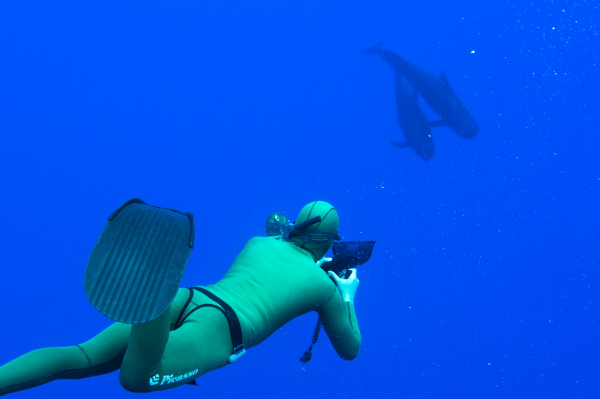Breath-Hold Diving Embracing Safety for a Safe and Fulfilling Experience
by FII - October 29th
Breath-hold diving, also known as freediving, is an exhilarating sport that invites us to explore the underwater world, pushing our limits while fostering a profound sense of calm and connection with nature. But like any extreme sport, breath-hold diving demands careful attention to safety. Whether you’re a beginner or an experienced freediver, prioritizing training and adhering to safety protocols ensures a rewarding and safe breath-hold diving experience.


Understanding the Physiology of Breath-Hold Diving
A central part of breath-hold diving safety is understanding the body’s physiological response to hypoxia (low oxygen levels). Hypoxia occurs naturally as we freedive, but if unmanaged, it can progress to severe levels, leading to a loss of motor control (LMC) or even a blackout. LMC, also known as “samba,” is characterized by shaky, uncoordinated movements where a freediver is still conscious but unable to control motor skills. Blackout, however, is a complete loss of consciousness. A buddy trained in breath-hold diving safety protocols is critical in such scenarios, as a freediver experiencing LMC or blackout cannot self-rescue. Properly trained buddies help prevent tragedies by offering immediate support and managing the diver’s airway to prevent drowning.
The Role of a Buddy in Breath-Hold Diving Safety
One of the key principles of breath-hold diving safety is the “One Buddy Up, One Buddy Down” rule, ensuring that every diver has a dedicated safety buddy on the surface. Contrary to popular belief, most breath-hold diving incidents do not happen at depth but rather on the surface or in very shallow water at the end of the dive. This buddy system is essential for spotting early signs of hypoxia and responding quickly to developing issues. The buddy remains within arm’s reach of the surfacing diver, ready to assist with airway protection if LMC or blackout occurs.
Recognizing Symptoms of Hypoxia in Breath-Hold Diving
Freedivers must also be attuned to their body’s sensations, particularly symptoms associated with hypoxia, such as euphoria, dizziness, tingling, and visual disturbances. These early warning signs often precede more severe outcomes, making self-awareness combined with buddy feedback essential for safe breath-hold diving. Safety buddy monitors hypoxic signs such as cyanosis (bluish discoloration), which is one of the useful indicators to help freedivers avoid pushing their limits too far. Educating oneself on these signs and symptoms transforms breath-hold diving from a risky activity into a disciplined practice rooted in respect for one’s body and limitations.
Skill Development and Repetition Is Key in Breath-Hold Diving
A solid preparation foundation is key for safe breath-hold diving. Every freediver should practice under proper guidance, familiarize themselves with protocols for problem management, and rehearse emergency procedures such as recovery positions and laryngospasm management. Hypoxia is an inherent part of breath-hold diving, and the unintended step from a fantastic dive to one with LMC or blackout is possible, even for experienced freedivers. Here, a properly trained buddy can make all the difference in a safe outcome.
By following these breath-hold diving safety principles, divers can push their limits while staying safe, confident that both they and their buddies are prepared for the unexpected. In breath-hold diving, safety is more than a protocol; it’s a commitment to the sport, each other, and the awe-inspiring underwater world. Dive safe, dive smart, and enjoy the profound beauty of breath-hold diving with peace of mind.
